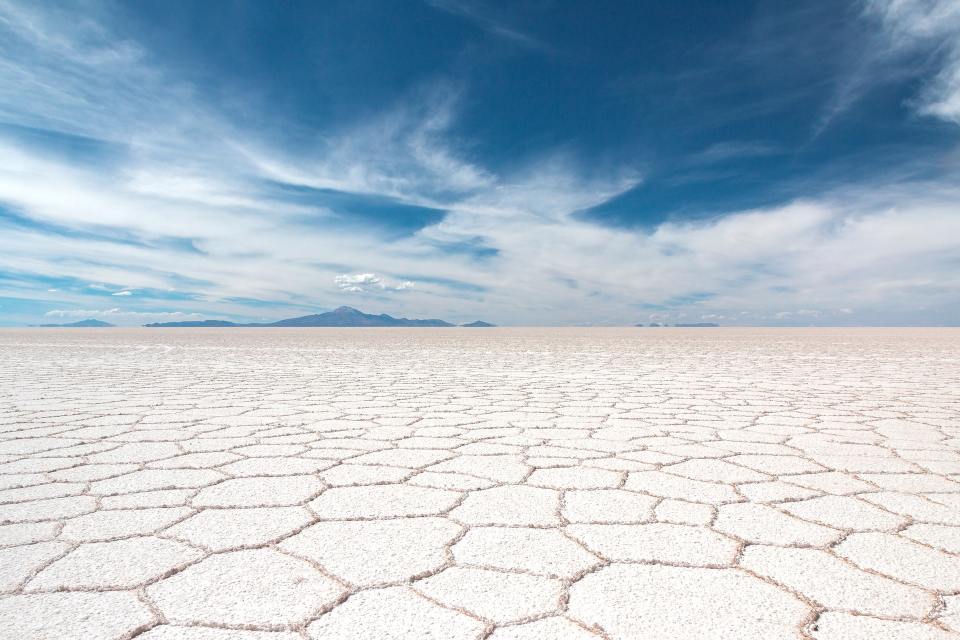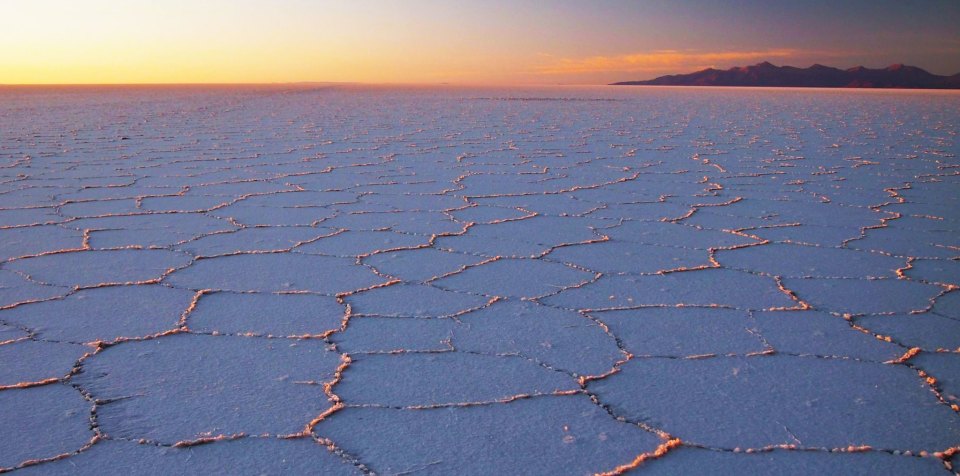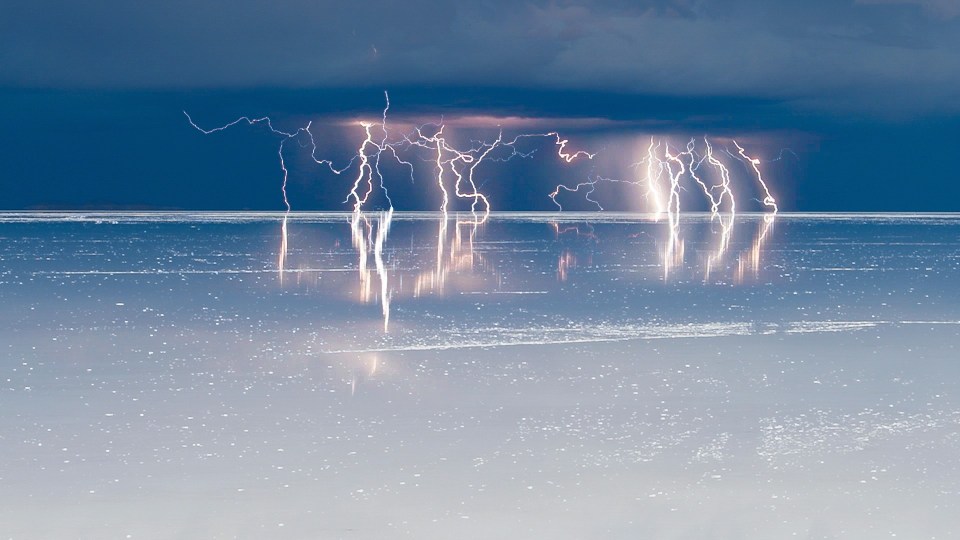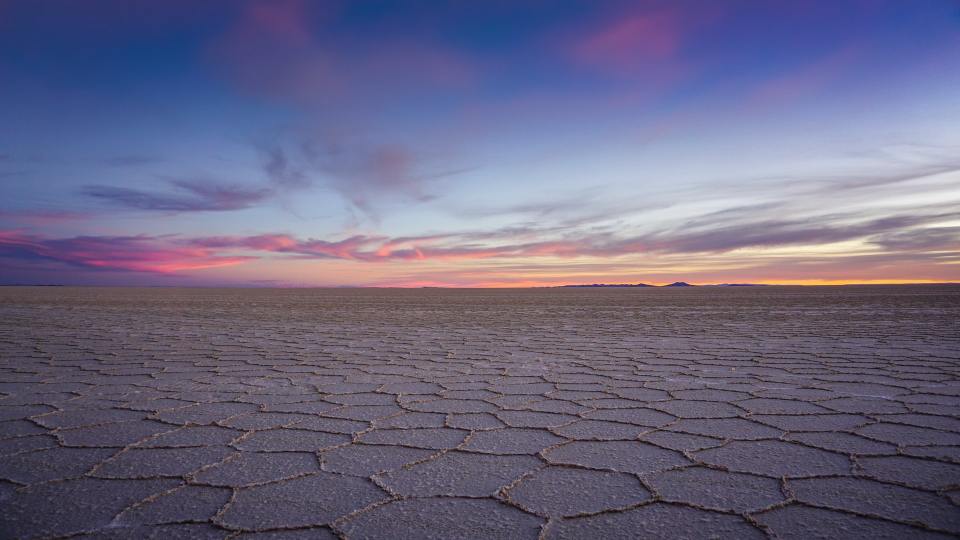Nature lovers around the globe agree that Salar de Uyuni—a Bolivian salt flat—is undeniably one of the world’s most stunning natural wonders. During the rainy season, a thin pool of water transforms Salar de Uyuni into a flawless mirror which creates a breathtaking reflection of the sky. Most of the year, Salar de Uyuni is a seemingly endless gleaming white expanse of salt punctuated by an island of towering cacti, flocks of pink flamingos, and the occasional mound of volcanic rock.

Photo by Samuel Scrimshaw/unsplash.com
Roughly 40,000 years ago, Salar de Uyuni was covered by an expansive lake called Lake Minchin. As Lake Minchin dried up and created a series of smaller lakes, the largest salt flat on Earth formed in its wake. Today, visitors flock to Salar de Uyuni to burn rubber on the salt flat’s slick surface and snap magical Instagram photos of a placid pool of water reflecting a gorgeous sunset.

Photo by syssy70/Flickr
Salar de Uyuni is home to a small island composed of volcanic rock called Isla del Pescado. The fish-shaped island is made out of the remnants of a dormant volcano. Isla del Pescado is covered with giant cactus—some of which are estimated to be over 1,000 years old.
Several tour companies offer excursions across Salar de Uyuni. Travelers can view lithium-rich salt mounds, roving foxes and llamas, and a train cemetery full of rusted antique train cars that were abandoned by a mining company.

Photo by Soumei Baba/Flickr

Photo by Giacomo Buzzao/unsplash.com
The world’s largest salt flat is even home to a hotel made out of salt called Playa Blanca. Playa Blanca is not currently accepting guests, but the grounds feature some impressive salt sculptures and a flag exhibit which showcases flags from around the world. A journey across Salar de Uyuni will convince you that the salt flat deserves its own flag because Salar de Uyuni is a world unto itself.
Click Here to Read the Full Original Article at Unusual Places…